Arrow Corrugation
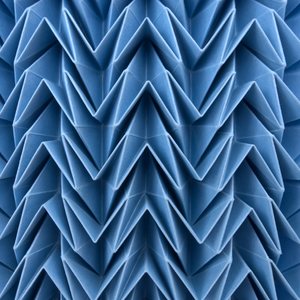
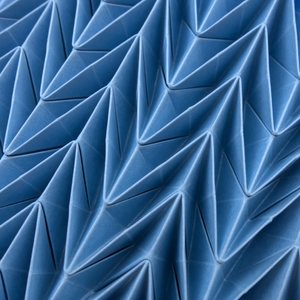
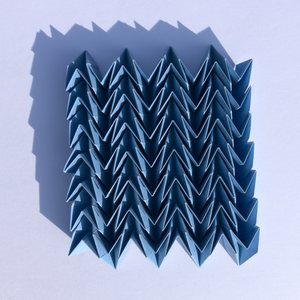
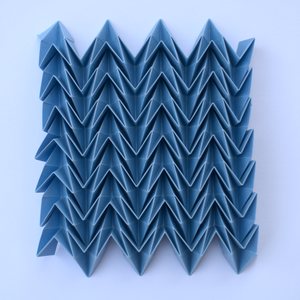
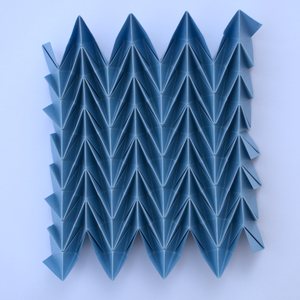
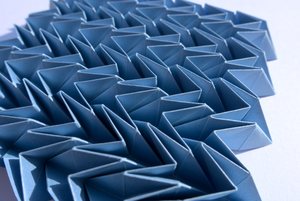

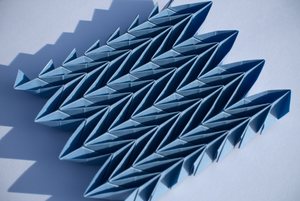
In March 2020, shortly after the CfC2 conference, as the pandemic was just taking off, the origami Community for Creators started organizing online origami meetings. One of the first in which I took part was a workshop by Alejo Wilkinson. The model we folded was in itself not that interesting (a modified Miura-Ori, like this one), but I found the folding method really fascinating since it was a completely different approach than I myself used for folding this model. During the workshop, I got lost at one point and made some mistakes, which I later analyzed and which then led me to designing a completely new model, which you see here.
The name Arrow Corrugation was an obvious choice: despite the arrows not really being there (each one consists of two separate parts), their outline immediately comes to mind when you look at the model, especially in direct sunlight which exaggerates the shadows. This is an optical illusion similar to the Kanizsa triangle.
The back side displays a fishbone-like pattern of parallel ribs with parallelograms emanating from their sides.
I was very happy with this design since I find it harder to design a corrugation than a regular tessellation. I performed some research and found a number of similar yet different designs: the blue corrugation by Robin Scholz, p35-Arrows by Frank van Kollem, Up & Down Tessellation by Marc Vigo which seems to be the same as Straight Arrow Tile by Polly Verity, Arrow Repeat also by Polly Verity, and Arrow Tessellation by Carlos Natan López Nazario. Then, literally when writing this model description for my web page, I stumbled upon Polly Verity’s model Arrow Castellation and realized it was exactly the same design, but created many years earlier (flickr picture is from 2006). Even later, I found out that Andrew Hudson also designed the same pattern, in early 2007.
So, yet another independent design (or discovery if you will). One thing I can never praise enough is flickr’s value as the place where you can search other people’s origami work and actually be able to find stuff using full-text search. I have learned so much about others’ work thanks to flickr, including even Fujimoto’s work unearthed by Eric Gjerde and for me, this makes it much more valuable than other social media channels, even if they give me twenty times as many likes for each model. Creation and mutual learning are what counts.
Comments